
What you’ll pay in Columbus, OH, for furnace repairs depends on many factors. Here’s a breakdown of what can go wrong and the cost to fix those issues.
Conceal your bulky AC with these creative tips


In the sweltering summer heat, there’s nothing like the cold breeze of an air conditioner. But if you aren’t a fan of the way your AC unit looks in your backyard, there are a few tricks you can use to cover it up. Here are six of the best ways to hide an air conditioner so that it better blends into your outdoor space.
You might be tempted to cover up your unsightly AC unit by whatever means necessary, but there are some limitations. Stick to these rules:
Avoid fitted covers (they can block airflow and potentially damage the unit).
Leave at least 4 feet of empty space around each side of the unit so that your HVAC technician can access it.
Allow at least 5 feet of clearance above the unit so that heat can safely escape.
When putting plants around your air conditioner, place them far enough away so that they don’t get hit by the heat the unit produces.
Unsure about any of these guidelines? Reach out to your local AC installer to get their professional opinion.
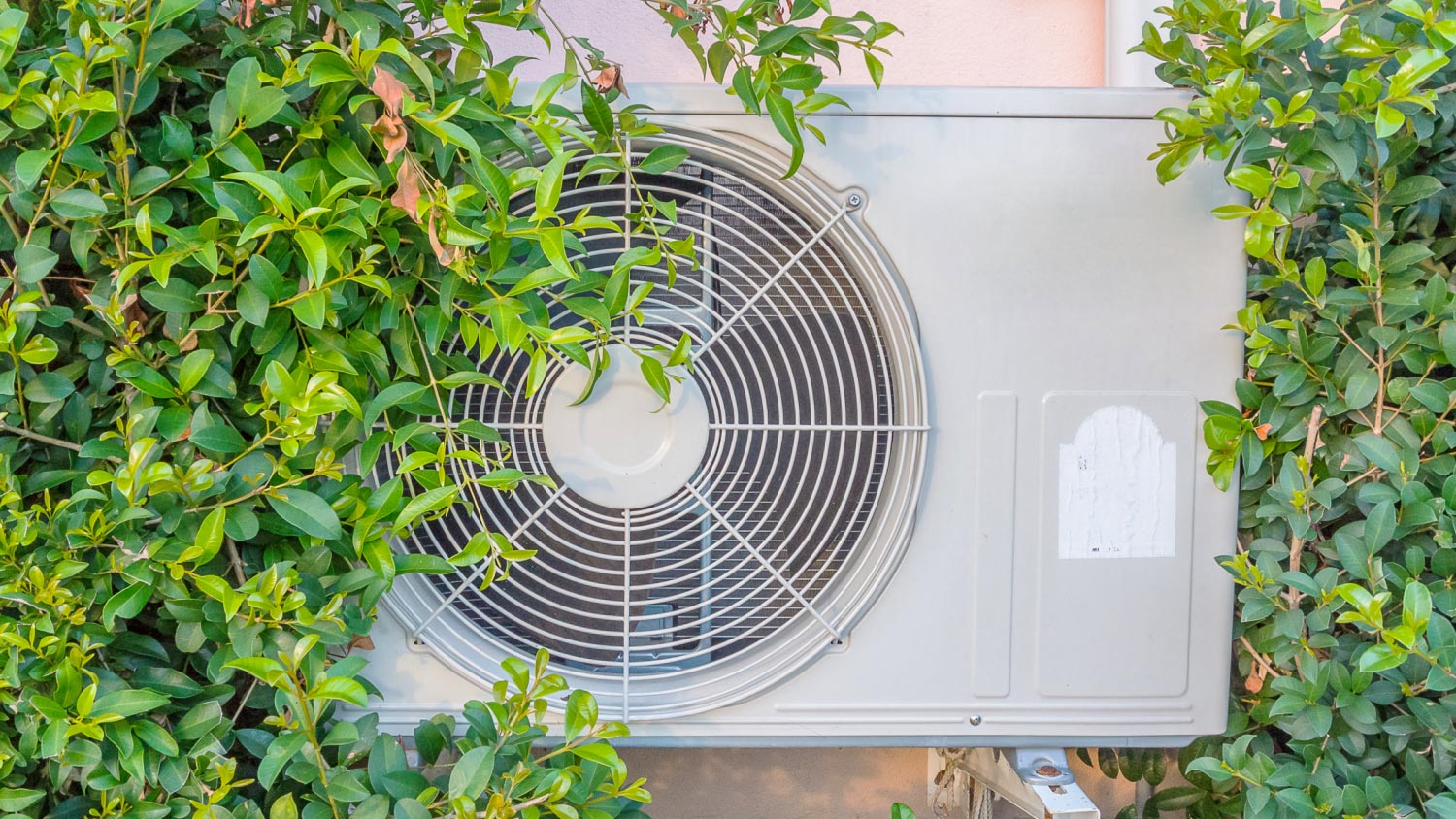
If you’ve got a green thumb, you can put it to good use by adding landscaping around your AC unit. Some popular options include:
Ornamental grasses, like fescue and silvergrass
Big-leaf plants, like hostas and elephant ears
Taller flowers, like irises and tulips
Before planting around your air conditioner, cover the surrounding area. Many people use mulch and rocks for this purpose, but if you have the choice, it’s better to go with rocks. A rock ground cover is more expensive, but it doesn’t need to be replaced as often. Plus, mulch can get into your AC unit and damage it, but large rocks won’t make their way inside.
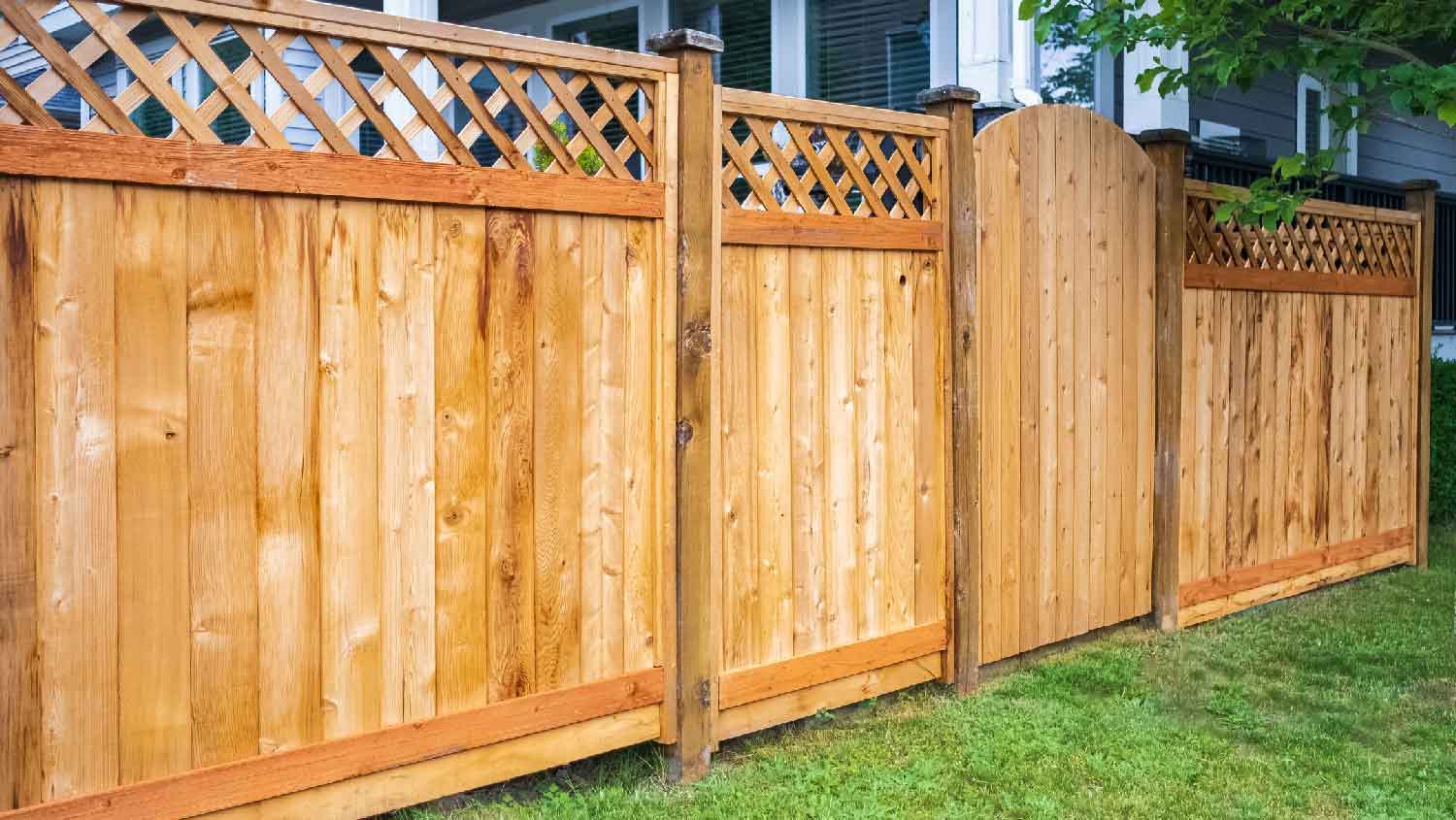
Putting up fencing is another easy way to hide an air conditioner. Just make sure to add a gate so that your HVAC expert can easily access the AC unit during service appointments. The gate should be at least the same size as your air conditioner in case the tech needs to replace it.
In addition to concealing your air conditioner, the fence also serves another practical purpose: protecting your landscaping from the heat produced by your AC unit.
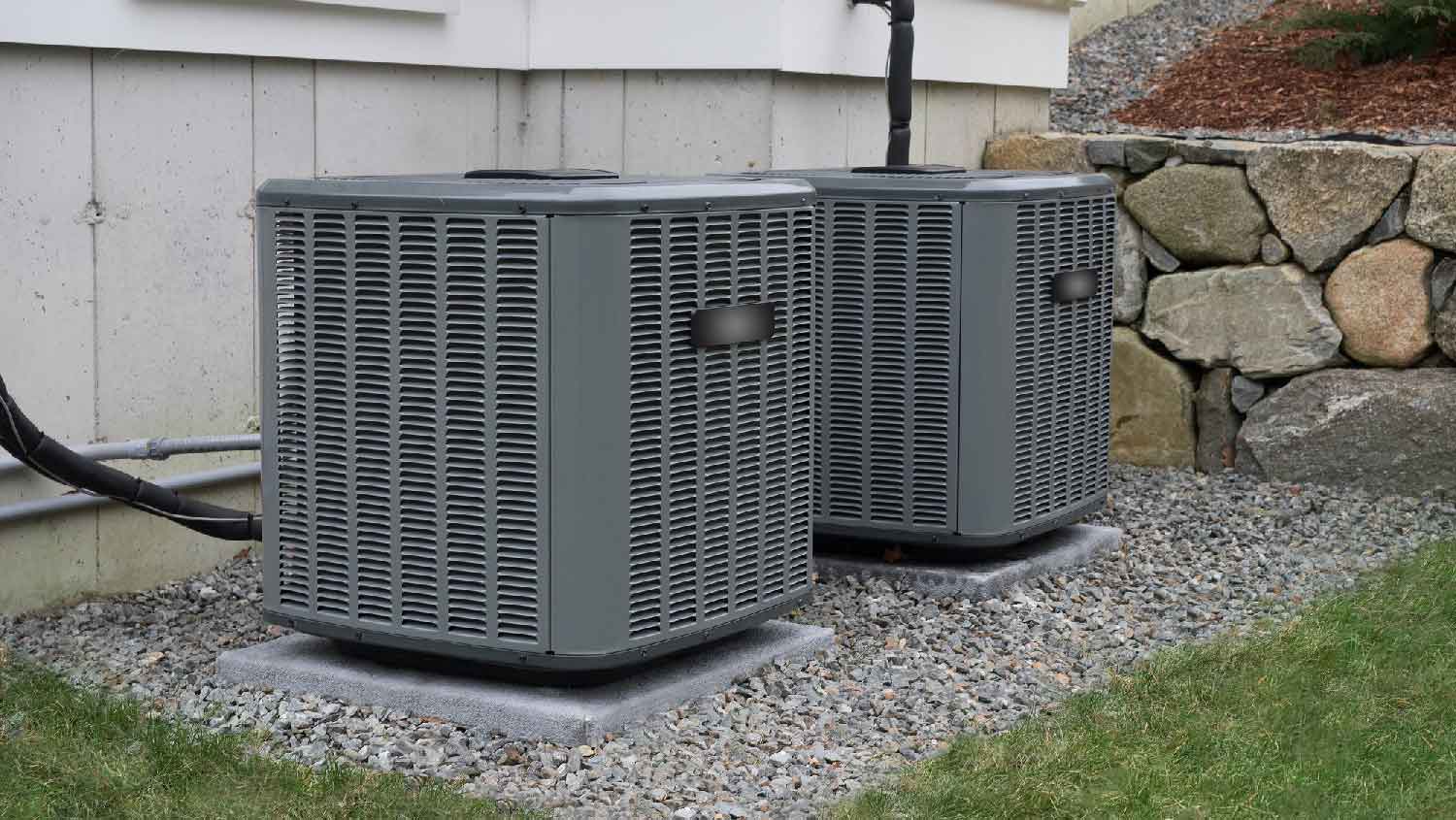
Don’t want to box in your AC unit with a fence? Consider building a single wall using a sturdy material like brick, natural stone, or cement blocks. Otherwise, you can flex your creative muscles and construct a wall from wooden pallets or other repurposed items. Once it’s up, you can customize the wall by painting it, installing planters, or adding storage shelves.
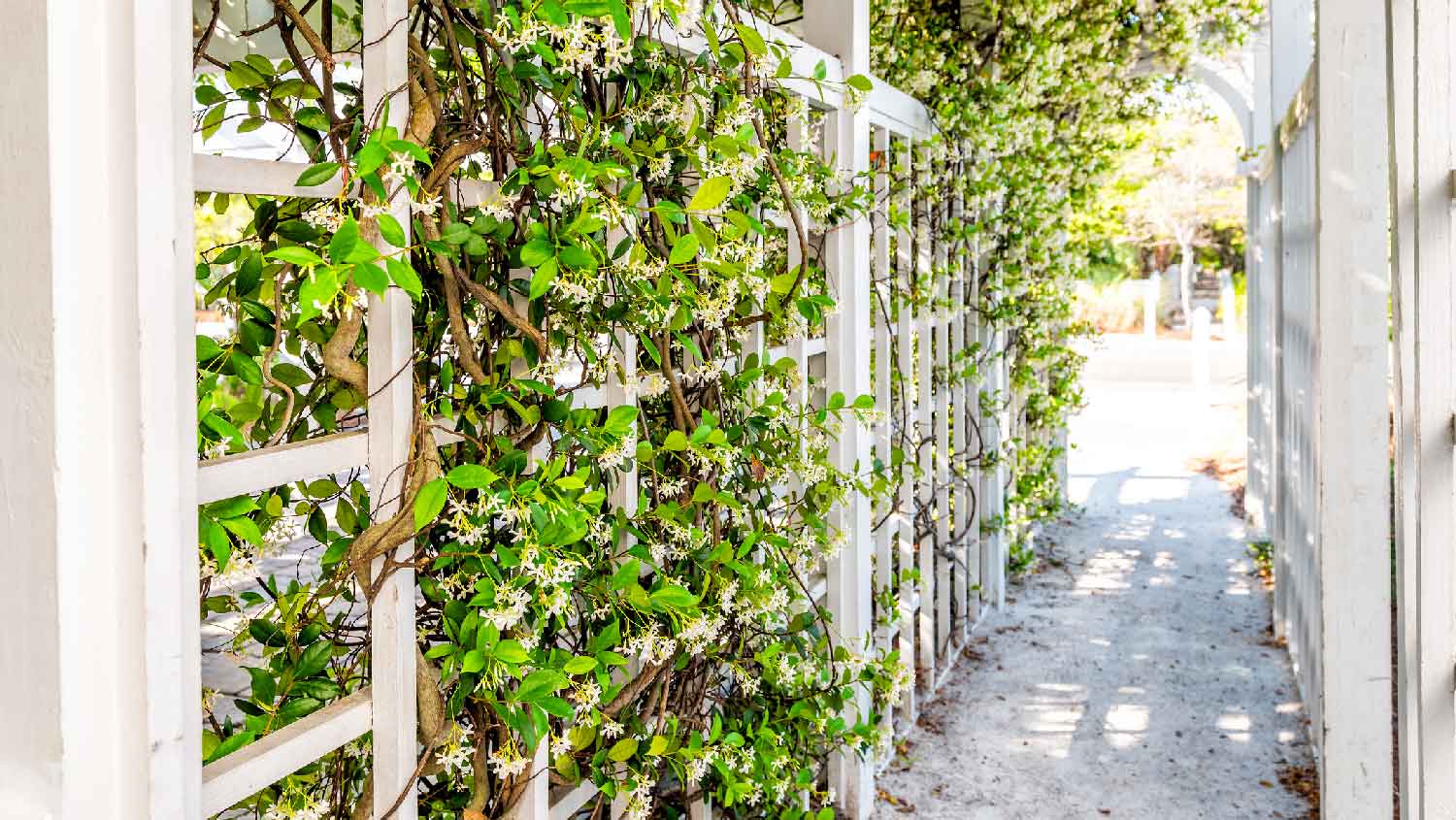
If you want your backyard to look more like a secret garden, set up a trellis or lattice fencing around your air conditioner, then let flowering vines grow around it.
Some plants to consider:
Ivy
Climbing hydrangea
Wisteria
Honeysuckle
Jasmine
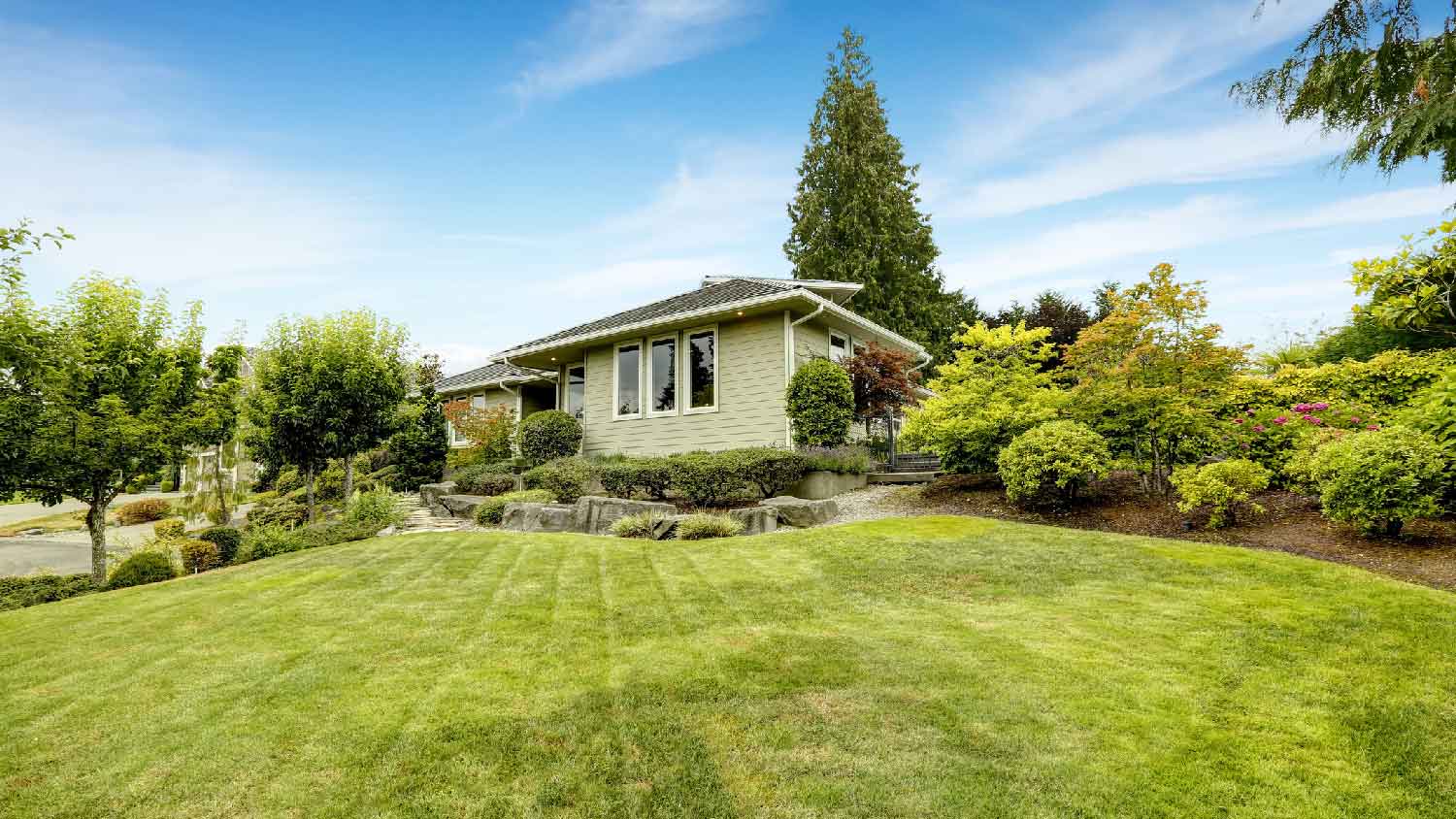
Placing potted shrubs or plants around your AC unit is a less permanent alternative to adding landscaping. Since they aren’t rooted in the ground, potted plants are easy to swap out and move around, so you can switch things up whenever you’d like.
Here are some potted plants you can use to conceal your AC:
Bamboo
Snake plants
Palms
Cactus
Fiddle-leaf figs
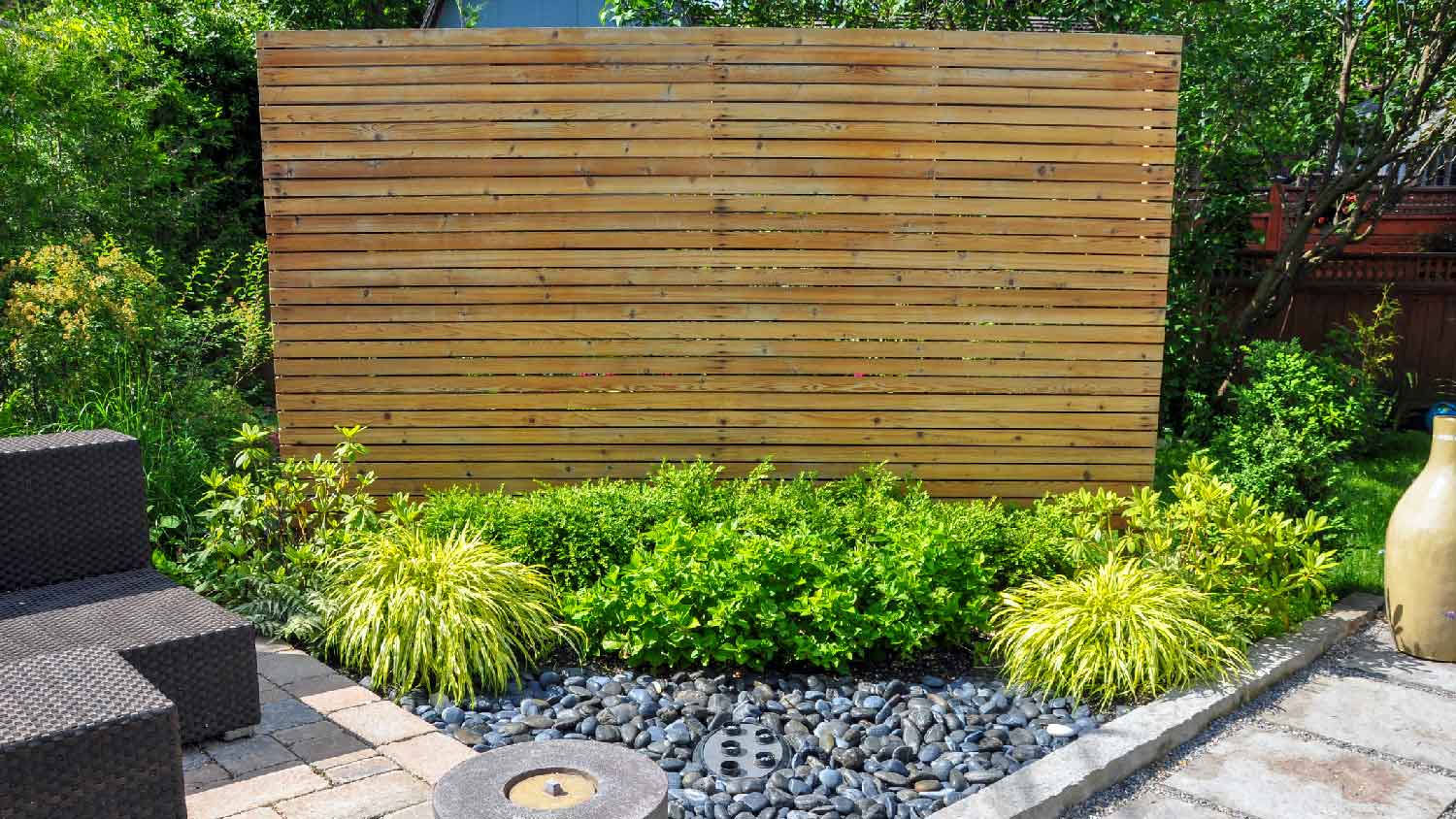
If you don’t want to build or plant anything, you can simply hide your air conditioner behind a privacy screen. These screens are available in a variety of colors, designs, and heights, so it shouldn’t be too hard to find one that suits your style.
From average costs to expert advice, get all the answers you need to get your job done.

What you’ll pay in Columbus, OH, for furnace repairs depends on many factors. Here’s a breakdown of what can go wrong and the cost to fix those issues.

The average cost of an electric furnace ranges between $1,700 and $7,000, depending on the size, ductwork, and complexity.

When you’re looking for a way to keep warm this winter, check out outdoor wood furnace prices based on size, installation, and other cost factors.

Who do you call to fix a boiler? This easy guide will help you hire the right pro for the job of fixing your boiler.

Crawl space dehumidifier costs are worth it if you consider their effect on energy bills and avoiding moisture damage. Learn what makes up the total cost of the project.

Learn about the different types of electric furnaces to decide why you would use one and which option is best for replacing your home heating system.